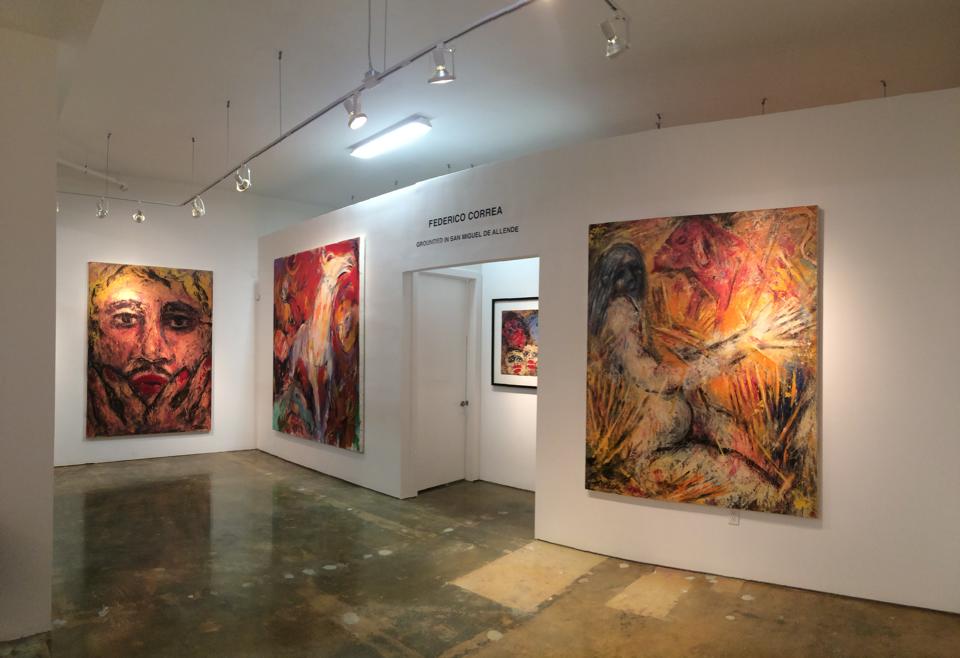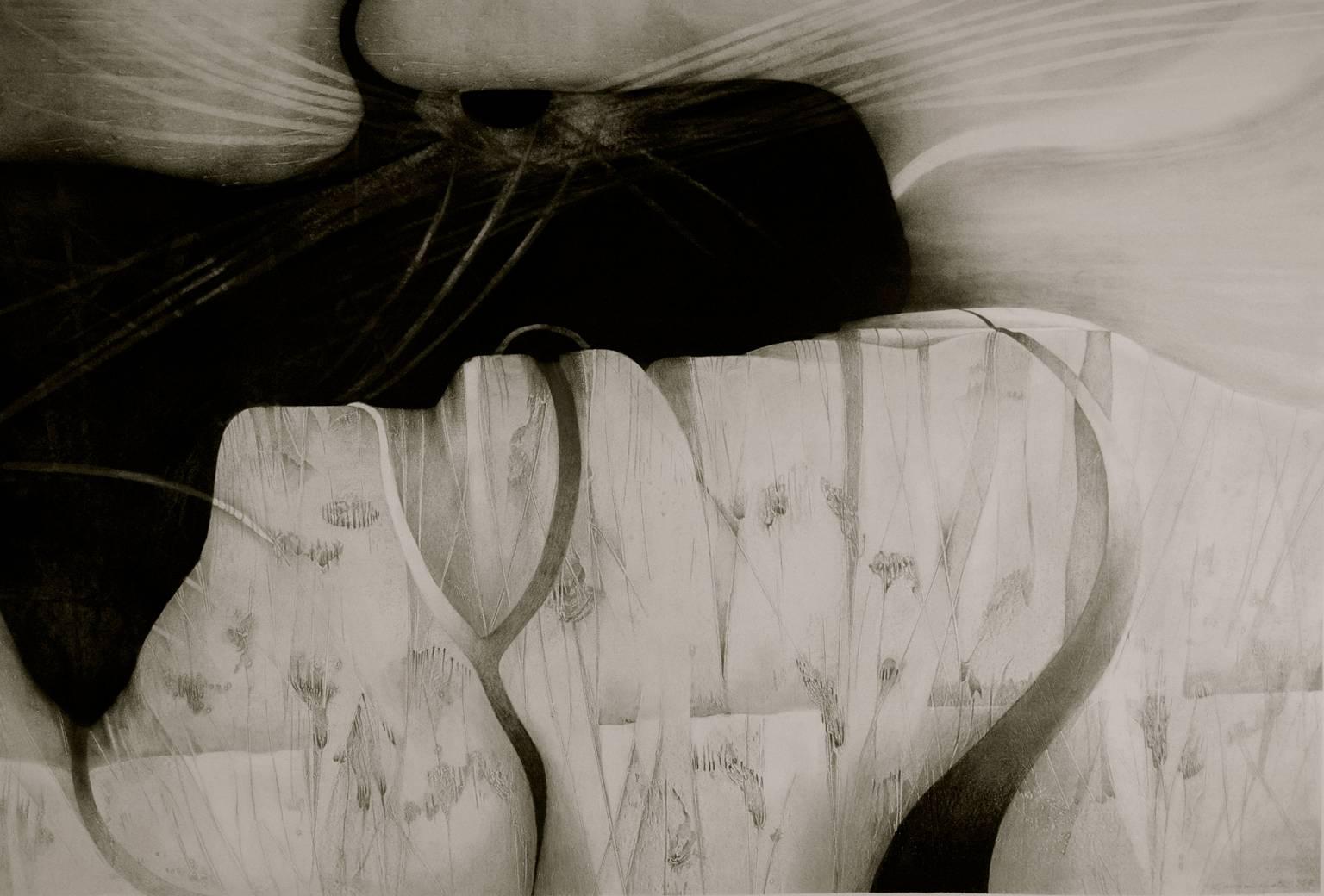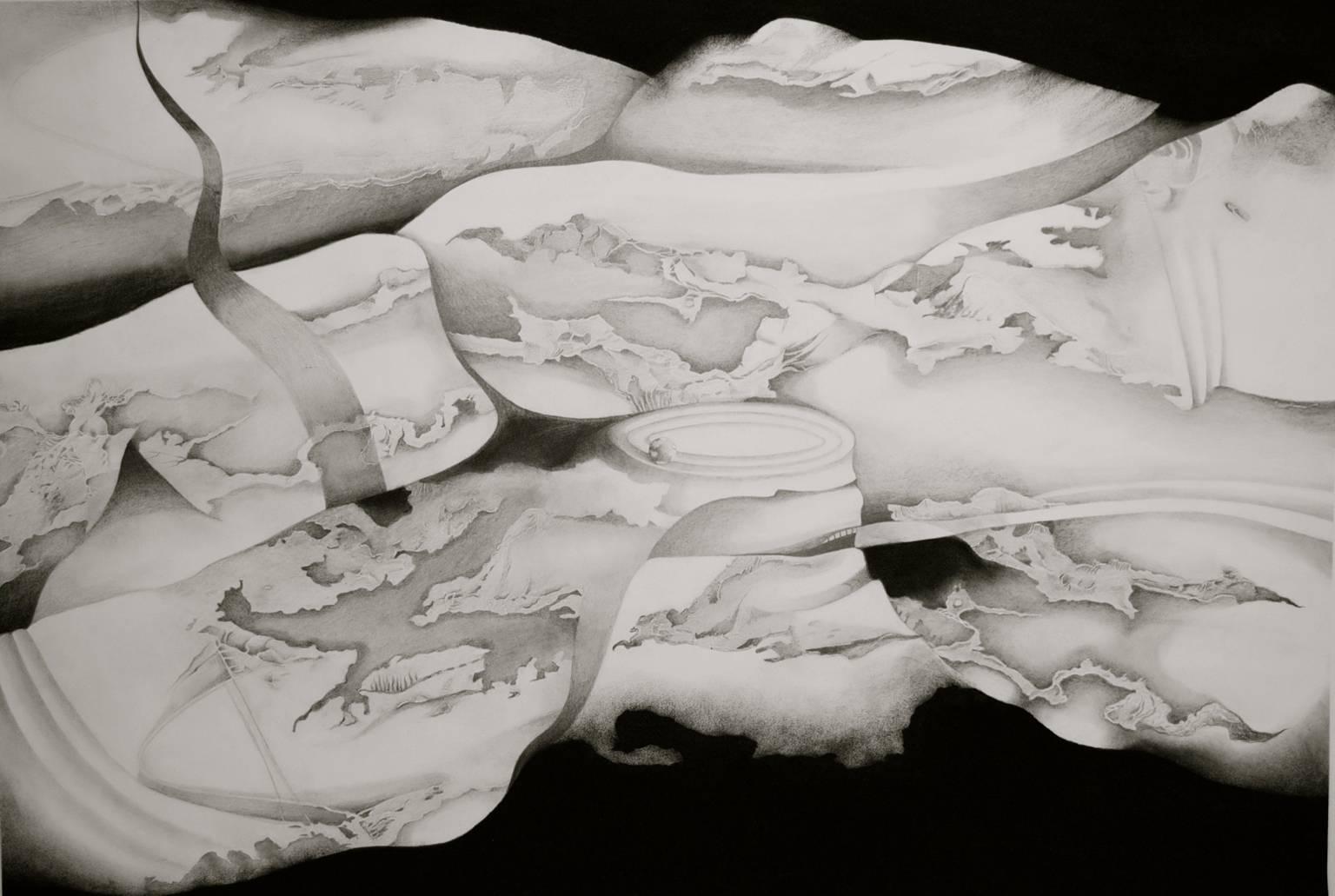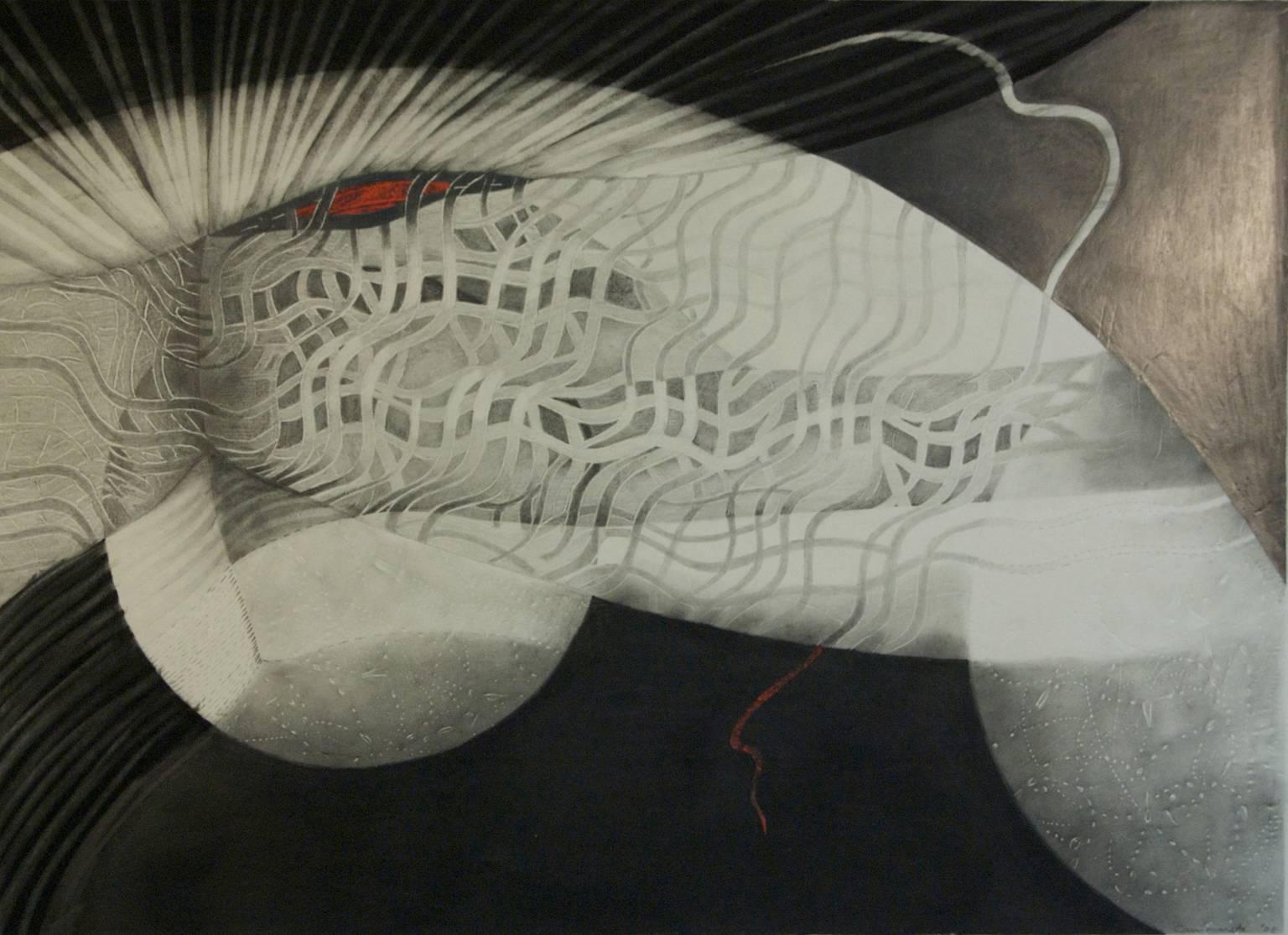Items Similar to "Excursion 1" - Horizontal black & white abstract drawing (pencil on paper).
Want more images or videos?
Request additional images or videos from the seller
1 of 5
Kathleen Cammarata"Excursion 1" - Horizontal black & white abstract drawing (pencil on paper).2008
2008
About the Item
Charcoal and pencil on paper.
Note: The painting shown on the wall may not be proportional to the room size.
- Creator:Kathleen Cammarata (American)
- Creation Year:2008
- Dimensions:Height: 44 in (111.76 cm)Width: 30 in (76.2 cm)
- Medium:
- Movement & Style:
- Period:
- Condition:
- Gallery Location:Miami, FL
- Reference Number:1stDibs: LU61431863013

About the Seller
5.0
Vetted Seller
These experienced sellers undergo a comprehensive evaluation by our team of in-house experts.
1stDibs seller since 2017
17 sales on 1stDibs
- ShippingRetrieving quote...Ships From: Miami, FL
- Return PolicyA return for this item may be initiated within 14 days of delivery.
More From This SellerView All
- "Excursion 4" - Horizontal black & white abstract drawing (pencil on paper).By Kathleen CammarataLocated in Miami, FLCharcoal and pencil on paper. Note: The painting shown on the wall may not be proportional to the room size.Category
Early 2000s Abstract Abstract Drawings and Watercolors
MaterialsCarbon Pencil, Paper, Charcoal, Pencil
- "Excursion 3" - Horizontal black & white abstract drawing (pencil on paper).By Kathleen CammarataLocated in Miami, FLPencil and Charcoal on paper. Note: The painting shown on the wall may not be proportional to the room size.Category
Early 2000s Abstract Abstract Drawings and Watercolors
MaterialsCarbon Pencil, Paper, Charcoal, Pencil
- "Excursion 14" - Black & White abstract drawing (pencil and charcoal on paper).By Kathleen CammarataLocated in Miami, FLCharcoal and pencil on paper. Note: The painting shown on the wall may not be proportional to the room size.Category
Early 2000s Abstract Abstract Drawings and Watercolors
MaterialsCarbon Pencil, Paper, Charcoal, Pencil
- "Sphere 2" - Black & White abstract drawing (pencil and charcoal on paper).By Kathleen CammarataLocated in Miami, FLPencil, colored pencil and charcoal on paper. Note: The painting shown on the wall may not be proportional to the room size.Category
Early 2000s Abstract Abstract Drawings and Watercolors
MaterialsCharcoal, Pencil, Paper, Carbon Pencil, Color Pencil
- "Sphere 1" - Black & White abstract drawing (pencil and charcoal on paper).By Kathleen CammarataLocated in Miami, FLPencil, colored pencil and charcoal on paper. Note: The painting shown on the wall may not be proportional to the room size.Category
Early 2000s Abstract Abstract Drawings and Watercolors
MaterialsCharcoal, Paper, Carbon Pencil, Pencil, Color Pencil
- "Christ of Auschwitz, Salvador de Auschwitz" - Ink drawing on paper.By Mathias GoeritzLocated in Miami, FLMathias Goeritz is a famous sculptor, painter, poet, of German origin, his concepts have to do with “emotional architecture”, he was a collaborator of...Category
20th Century Modern Abstract Drawings and Watercolors
MaterialsPaper, Ink
You May Also Like
- Abstract Cubist Charcoal Drawing of a Standing WomanBy Valery Kleveroy (Klever)Located in Houston, TXBlack and white portrait of a woman done in a style that combines abstraction and cubism, much like the work of Fernand Leger. Signed and dated in lower left corner. Artist Biography: Valery Kleverov was born in Engels, Russian Federation, Soviet Union June 28, 1939 the son of a fighter test pilot in the Soviet Air Force. He exhibited an independent, rebellious, and highly artistic temperament from a young age. Conscription into the Red Army at the standard age of (18) was first and last straw in the young artist’s battle with the State, he lasted only a few months before making an unauthorized parachute jump over a forest to go permanently AWOL. After 3 weeks hiding in the woods, he eventually made his way to Leningrad, dropped his first name and the “ov” from the end of his name and began his life as the underground artist known as “KLEVER”. He fell in with a close-knit group of young anti-authoritarian rebels who eventually became known to the world as the “Non-Conformists”, a small gang of free thinkers mainly from Leningrad and Moscow who rebelled against State control of artistic expression and of free thought. In the Soviet Union, not only religion was outlawed - art, literature, music and dance were all subject to heavy censorship and state oversight. Among paintings historical, religious, abstract, anti-Soviet and erotic subjects were all against the law. From 1966 to 1977 Klever made a reputation for himself as one of the non-conformists most overtly critical of the Soviet state. Many of his paintings from this period can be described as nothing less than heroic- they are truly remarkable visual essays on the evils of the national security/surveillance state, propaganda and manipulation of cultural symbols, suppression of artistic and religious freedom, revisionist history, and unfilled promises for the future. All of them were painted stored and exhibited not only at great risk to the artist and his associates, but also to anybody who sought to view them. In spite of the secrecy, the KGB discovered the existence of these pieces and began to follow Klever’s every move. There were surprise visits to his studio, harassment wherever he went, friends and family being questioned all a direct result of his determination to express himself artistically against Soviet control. From this time forward Klever had an exhibit which was open for viewing at all times inside the apartment of Bob Kashilohov as part of a network which paralleled the Samizdat network for sharing of forbidden literature. Klever was arrested for his participation in the most important non- conformist exhibitions which took place during his time there. These were the Bulldozer Exhibition in Moscow, 1974, (so named because the KGB bulldozed the exhibition and destroyed much of the work) and the Nevski Dom exhibition in Leningrad, 1975. These exhibitions represented some of the early cracks in the foundations of the Soviet state’s control over the population’s basic aspirations for economic, personal and creative freedom that ended with collapse in 1991. Repercussions of the Bulldozer exhibition were that some of the painters were arrested or even killed. Approximately 70 artists were arrested, including Klever. Media outcry in the west allowed most of the artists to be released within a week. Two weeks later another exhibition was allowed to proceed and became known as “Half Day of Freedom” in the Soviet Union. The Nevsky exhibition caused a huge sensation and was a watershed moment in the cultural history of the Soviet Union. People lined up for 30 blocks long over the course of the two week exhibition to see the forbidden works. Klever showed a large collection of explicit anti-Soviet paintings...Category
20th Century Abstract Abstract Drawings and Watercolors
MaterialsCharcoal, Carbon Pencil
- Exquisite Corpse, Cadavre Exquis, Spanish Surrealist Drawing 3 ArtistsBy Xisco MensuaLocated in Surfside, FLProvenance: This piece was deaccessioned from the Bass museum in Miami Beach florida. This piece is a good museum example of Exquisite corpse, also known as exquisite cadaver (from the original French term cadavre exquis), A method by which a collection of words or images is collectively assembled. This example is by Manuel Saez, Xisco Mensua and Guillermo Paneque. Each collaborator adds to a composition in sequence, either by following a rule or by being allowed to see only the end of what the previous person contributed. The technique was invented by surrealists. Surrealism principal founder André Breton reported that it started in fun, but became playful and eventually enriching. In the beginning were Yves Tanguy, Marcel Duchamp, Jacques Prévert, Benjamin Péret, Pierre Reverdy, and André Breton. Other participants probably included Max Morise, Joan Miró, Man Ray, Simone Collinet, Tristan Tzara, Georges Hugnet, René Char, and Paul and Nusch Éluard. Henry Miller often partook of the game to pass time in French cafés during the 1930s. Manuel Sáez (born 6 March 1961) is a Spanish, self-taught artist. Since 1984, he has been living and working in Valencia. The Enciclopedia Universal Ilustrada Europeo-Americana describes Manuel Sáez as among the most important painters of the turn of the 21st century owing to his simultaneously sensual and psychological approach to the world of objects, landscapes, figures and portraits. As a resident fellow of the Spanish Fine Arts Academy in Rome in 1990, Sáez elaborated a series of portraits called Biografia no autorizada In 1991 Sáez held his first important show at the Fundació La Caixa. in Valencia In 1996 he presented his first retrospective, Colección Exclusiva 1984-1995, in the Club Diario Levante of Valencia, as well as the Madrid Circle of Fine Arts, the Salas Verónicas of Murcia, the Castellón Delegation and the Brocense of Cáceres. In 2000 Sáez exhibited in Mexico City's Museo Rufino Tamayo and in the Instituto Valenciano de Arte Moderno (IVAM) in Valencia. In 2008 Sáez's work could be seen at the Sala Parpalló in Valencia. In 2003-04, Dispersions was exhibited at the Bass Museum of Art in Miami. In 2007, Sáez's work is featured in the Valencian Institute of Modern Art's (IVAM) El Pop Art en la Colección del IVAM ("Pop Art in the IVAM Collection") in Valencia.[12] Xisco Mensua Initially studied at Escuelas Virtèlia, but followed an atypical school career due to illness. Began to paint in 1978. Took a course in painting at the Escola d’Arts i Oficis (Valencia), where he had lived since the age of eight. Lived in Barcelona from 1982 to 1987, studying art at the Escola Eina for the first two years. Returned to Valencia and began exhibiting in 1990. Produced works in co-operation with Fernando Ros and Mim Juncà, as well as designing stage sets for the theatre. Now forms part of the Jacques Moran collective. Through drawing, Mensua creates a fictional world in an exercise in which he transfigures common references, whether intimate or biographic, political or social. Guillermo Paneque Seville, 1963 Spanish painter. He completed his artistic training at the Faculty of Fine Arts in Seville, Director and founder, along with Rafael Agredano and José Espaliú, of the magazine Figura in 1984. It is in the mid-eighties when his work is made known within the Andalusian artistic scene, through the production of small format paintings populated with references and symbols from the religious and everyday environment that the author mixes with a playful sense and with erotic characters that reveal a clear rejection of the Andalusian artistic tradition. His work evolves towards a formal synthesis and an iconographic cleansing in the line of conceptual art. He has starred in numerous solo exhibitions and participated in important collectives, among which include: Aperto 86 at the Venice Biennial (1986), Spain 87. Dynamiques and Interrogations (1987) at the Musée d'Art Moderne de la Ville in Paris, Spanish natures...Category
20th Century Surrealist Figurative Drawings and Watercolors
MaterialsPaper, Charcoal, Carbon Pencil
- Abstract Expressionist Biomorphic Coloured Pencil Drawing.Located in Cotignac, FR1980s abstract expressionist biomorphic coloured pencil drawing on paper by Belgian artist André Pierret, signed bottom right. André Pierret was born ...Category
1980s Abstract Expressionist Abstract Drawings and Watercolors
MaterialsPaper, Carbon Pencil, Color Pencil
- Flock 7By Nigel BirdLocated in Deddington, GBOriginal abstract painting depicting the sounds of a bird flock. Nigel Bird has wonderful artworks for sale online and in our art gallery. Nigel Bird Studied Fine Art (Sculpture and ...Category
21st Century and Contemporary Abstract Abstract Drawings and Watercolors
MaterialsPaper, Carbon Pencil
- Location #1 : contemporary abstract work of artLocated in New York, NYDrawn from her imagination, Paula Elliott’s modern abstract works of art depict mysterious objects. In her works pastel has become the principal medium combined with charcoal, pencil...Category
2010s Abstract Abstract Drawings and Watercolors
MaterialsPaper, Charcoal, Pastel, Acrylic, Pencil
- Objet D'Art #1Located in New York, NYAbstract work of art. Charcoal, pencil, pastel, and acrylic on paper.Category
2010s Abstract Abstract Drawings and Watercolors
MaterialsPaper, Charcoal, Pastel, Acrylic, Pencil
Recently Viewed
View AllMore Ways To Browse
Pencil On Paper
Abstract Drawings White
Drawing Room Painting
Abstract Black And White Drawings
Charcoal Abstract On Paper
Horizontal Drawing
Black And White Pencil Drawing
Horizontal Watercolors
Black And White Charcoal Abstract Drawing
Navarro Gallery
Sempe Drawing
Antonin Anzil
Ernest Jones Vintage
Donald Allen
F Serra
Triptych Clock
18kt Pen
Modernist Jacob Hull




